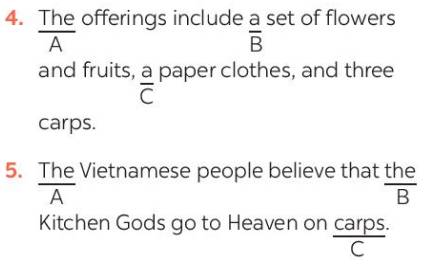Read the following passage and mark the letter A, B, C, or D on your answer sheet to indicate the correct answer for each of the questions.We find that bright children are rarely held back by mixed-ability teaching. On the contrary, both their knowledge and experience are enriched. We feel that there are many disadvantages in streaming pupils. It does not take into account the fact that children develop at different rates. It can have a bad effect on both the bright and the not-so-bright child....
Đọc tiếp
Read the following passage and mark the letter A, B, C, or D on your answer sheet to indicate the correct answer for each of the questions.
We find that bright children are rarely held back by mixed-ability teaching. On the contrary, both their knowledge and experience are enriched. We feel that there are many disadvantages in streaming pupils. It does not take into account the fact that children develop at different rates. It can have a bad effect on both the bright and the not-so-bright child. After all, it can be quite discouraging to be at the bottom of the top grade!
Besides, it is rather unreal to grade people just according to their intellectual ability. This is only one aspect of their total personality. We are concerned to develop the abilities of all our pupils to the full, not just their academic ability. We also value personal qualities and social skills, and we find that mixed- ability teaching contributes to all these aspects of learning.
In our classrooms, we work in various ways. The pupils often work in groups: this gives them the opportunity to learn to co-operate, to share, and to develop leadership skills. They also learn how to cope with personal problems as well as learning how to think, to make decisions, to analyze and evaluate, and to communicate effectively. The pupils learn from each other as well as from the teachers.
Sometimes the pupils work in pairs; sometimes they work on individual tasks and assignments, and they can do this at their own speed. They also have some formal class teaching when this is appropriate. We encourage our pupils to use the library, and we teach them the skills they need in order to do this effectively. An advanced pupil can do advanced work; it does not matter what age the child is. We expect our pupils to do their best, not their least, and we give them every encouragement to attain this goal.
Which of the following is NOT mentioned in the passage?
A. Group work gives pupils the opportunity to learn to work together with others.
B. Pupils also learn to develop their reasoning ability.
C. Pupils also learn how to participate in teaching activities.
D. Group work provides the pupils with the opportunity to learn to be capable organizers.





1. C (are -> were)
2. A (wondered -> asked)
3. B (who -> how / why)
4. B ( eat -> ate)
5. C (are there -> there are)
1. C
Giải thích: Trong câu trần thuật, ta chuyển động từ ở dạng hiện tại đơn sang dạng quá khứ đơn.
Sửa lại: The teacher asked the pupils what they were doing then.
(Giáo viên hỏi các học sinh họ đang làm gì.)
2. A
Giải thích: Sử dụng sai từ tường thuật.
Sửa lại: My father asked me what I was going to do the following weekend.
(Bố hỏi tôi định làm gì vào cuối tuần sau.)
3. B
Giải thích: Sử dụng sai từ để hỏi.
Sửa lại: My brother wanted to know how the scientists were exploring other planets.
(Em trai tôi muốn biết làm cách nào các nhà khoa học thám hiểm các hành tinh khác.)
4. B
Giải thích: Trong câu trần thuật, ta chuyển động từ ở dạng hiện tại đơn sang dạng quá khứ đơn.
Sửa lại: I asked my teacher what food spacemen ate when they were travelling in a spacecraft.
(Tôi hỏi giáo viên của mình các phi hành gia ăn gì khi học du hành trong phi thuyền.)
5. C
Giải thích: Trong câu trần thuật, không được đảo trợ động từ hay động từ tobe lên trước chủ ngữ.
Sửa lại: Scientists are still wondering how many planets there are in our galaxy.
(Các nhà khoa học vẫn băn khoăn liệu có bao nhiêu hành tinh trong thiên hà của chúng ta.)